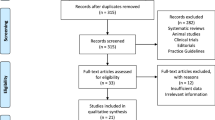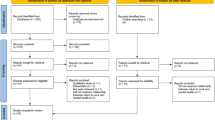Abstract
Objectives The United States is one of only three countries worldwide with no national policy guaranteeing paid leave to employed women who give birth. While maternity leave has been linked to improved maternal and child outcomes in international contexts, up-to-date research evidence in the U.S. context is needed to inform current policy debates on paid family leave. Methods Using data from Listening to Mothers III, a national survey of women ages 18–45 who gave birth in 2011–2012, we conducted multivariate logistic regression to predict the likelihood of outcomes related to infant health, maternal physical and mental health, and maternal health behaviors by the use and duration of paid maternity leave. Results Use of paid and unpaid leave varied significantly by race/ethnicity and household income. Women who took paid maternity leave experienced a 47% decrease in the odds of re-hospitalizing their infants (95% CI 0.3, 1.0) and a 51% decrease in the odds of being re-hospitalized themselves (95% CI 0.3, 0.9) at 21 months postpartum, compared to women taking unpaid or no leave. They also had 1.8 times the odds of doing well with exercise (95% CI 1.1, 3.0) and stress management (95% CI 1.1, 2.8), compared to women taking only unpaid leave. Conclusions for Practice Paid maternity leave significantly predicts lower odds of maternal and infant re-hospitalization and higher odds of doing well with exercise and stress management. Policies aimed at expanding access to paid maternity and family leave may contribute toward reducing socio-demographic disparities in paid leave use and its associated health benefits.
Similar content being viewed by others
Notes
Respondents were coded as having depressive symptoms if they indicated feeling “little interest or pleasure in doing things” or “down, depressed, or hopeless” either “More than half the days” or “Nearly every day” during the two weeks prior to the survey.
References
115th Congress of the United States. Family and Medical Insurance Leave Act, S.1810/H.R.3712 C.F.R. (2017).
Aitken, Z., Garrett, C. C., Hewitt, B., Keogh, L., Hocking, J. S., & Kavanagh, A. M. (2015). The maternal health outcomes of paid maternity leave: A systematic review. Social Science & Medicine, 140, 32–41.
American Academy of Pediatrics. (2014). Periodicity schedule: Schedule of screenings & assessments recommended at each well-child visit from infancy through adolescence. Retrieved 12 February, 2015, from http://www.aap.org/en-us/professional-resources/practice-support/Pages/PeriodicitySchedule.aspx.
Andres, E., Baird, S., Bingenheimer, J. B., & Markus, A. R. (2016). Maternity leave access and health: A systematic narrative review and conceptual framework development. Maternal Child Health Journal, 20, 1178–1192.
Bashiri, A., Smolin, A., Sheiner, E., Zelingher, J., & Mazor, M. (2003). Maternal rehospitalization after singleton term vaginal delivery. The Journal of Maternal-Fetal & Neonatal Medicine, 14(5), 344–348.
Berger, L. M., Hill, J., & Waldfogel, J. (2005). Maternity leave, early maternal employment, and child health and development in the US. The Economic Journal, 115, F29-F47.
Chatterji, P., & Markowitz, S. (2012). Family leave after childbirth and the mental health of new mothers. Journal of Mental Health Policy and Economics, 15(2), 61–76.
Dagher, R. K., McGovern, P. M., & Dowd, B. E. (2014). Maternity leave duration and postpartum mental and physical health: Implications for leave policies. Journal of Health Politics, Policy, and Law, 39(2), 369–416.
Declercq, E. R., Barger, M., Cabral, H. J., Evans, S. R., Kotelchuck, M., Simon, C., … Heffner, L. J. (2007). Maternal outcomes associated with planned primary cesarean births compared with planned vaginal births. Obstetrics & Gynecology, 109(3), 669–677.
Declercq, E. R., Sakalar, C., Corry, M. P., Applebaum, S., & Herrlich, A. (2013). Listening to Mothers III: Pregnancy and Birth. New York: Childbirth Connection.
Domonoske, C. (2016, 6 April). A big week for parents: New York State, San Francisco establish paid-leave laws. Retrieved 30 April, 2016, from http://www.npr.org/sections/thetwo-way/2016/04/06/473226596/a-big-week-for-parents-new-york-state-san-francisco-establish-paid-leave-laws.
Glass, J. (2004). Blessing or curse? Work-family policies and mother’s wage growth over time. Work and Occupations, 31(3), 367–394.
Grace, S. L., Williams, A., Stewart, D. E., & Franche, R.-L. (2006). Health-promoting behaviors through pregnancy, maternity leave, and return to work: Effects of role spillover and other correlates. Women & Health, 43(2), 51–72.
Grossman, M. (1972). On the concept of health capital and the demand for health. Journal of Political Economy, 80(2), 223–255.
Gruber, J. (1994). The incidence of mandated maternity benefits. American Economic Review, 84(3), 622–641.
Hajizadeh, M., Heymann, J., Strumpf, E., Harper, S., & Nandi, A. (2015). Paid maternity leave and childhood vaccination uptake: Longitudinal evidence from 20 low-and-middle-income countries. Social Science & Medicine, 140, 104–117.
Hegewisch, A., & Gornick, J. C. (2011). The impact of work-family policies on women’s employment: A review of research from OECD countries. Community, Work & Family, 14(2), 119–138.
Hill, J., Waldfogel, J., Brooks-Gunn, J., & Han, W.-J. (2005). Maternal employment and child development: A fresh look using newer methods. Developmental Psychology, 41(6), 833–850.
Jou, J., Kozhimannil, K. B., Blewett, L. A., McGovern, P. M., & Abraham, J. M. (2016). Workplace accommodations for pregnant employees: Associations with women’s access to health insurance coverage after childbirth. Journal of Occupations and Environmental Medicine, 58(6), 561–566.
Juhn, C., & Potter, S. (2006). Changes in labor force participation in the United States. Journal of Economic Perspectives, 20(3), 27–46.
Killien, M. G., Habermann, B., & Jarrett, M. (2001). Influence of employment characteristics on postpartum mother’s health. Women & Health, 33(1–2), 63–81.
Klerman, J. A., Daley, K., & Pozniak, A. (2014). Family and medical leave in 2012: Technical report. In J. Simonetta (Ed.). Cambridge, MA: Abt Associates, Inc.
Matthews, T. J., & MacDorman, M. F. (2012). Infant mortality statistics from the 2009 period linked birth/infant death data set. National Vital Statistics Report, 61(8):1–26.
McGovern, P., Dowd, B., Gjerdingen, D., Moscovice, I., Kochevar, L., & Lohman, W. (1997). Time off work and the postpartum health of employed women. Medical Care, 35(5), 507–521.
Milkman, R., & Appelbaum, E. (2013). Unfinished business: Paid family in California and the future of U.S. work-family policy. Ithaca, NY: Cornell University Press.
Monte, L., & Ellis, R. (2014). Fertility of women in the United States: 2012 (pp. 1–26). Washington DC: United States Census Bureau, U.S. Department of Commerce.
Perez, T. E., & Groshen, E. L. (2015). National Compensation Survey: Employee benefits in the United States, March 2015. Washington DC: U.S. Department of Labor.
Repetti, R. L., Matthews, K. A., & Waldron, I. (1989). Employment and women’s health: Effects of paid employment on women’s mental and physical health. American Psychologist, 44(11), 1394–1401.
Rossin, M. (2011). The effects of maternity leave on children’s birth and infant health outcomes in the United States. Journal of Health Economics, 30, 221–239.
Rossin-Slater, M., Ruhm, C. J., & Waldfogel, J. (2013). The effects of California’s paid family leave program on mothers’ leave-taking and subsequent labor market outcomes. The Journal of Policy Analysis and Management, 32(2), 224–245.
Ruhm, C. J. (2000). Parental leave and child health. Journal of Health Economics, 19, 931–960.
Russell, R. B., Green, N. S., Steiner, C. A., Meikle, S., Howse, J. L., Poschman, K., … Petrini, J. R. (2007). Cost of hospitalization for preterm and low birth weight infants in the United States. Pediatrics, 120(1), e1–e9.
Shapiro-Mendoza, C. K., Tomashek, K. M., Kotelchuck, M., Barfield, W., Weiss, J., & Evans, S. Risk factors for neonatal morbidity and mortality among “healthy,” late preterm newborns. Seminars in Perinatology, 30(2), 54–60.
Singh, G. K., & Kogan, M. D. (2007). Persistent socioeconomic disparities in infant, neonatal, and postneonatal mortality rates in the United States, 1969–2001. Pediatrics, 119(4), e928–e939.
Society for Maternal-Fetal Medicine, Bailit, J. L., Gregory, K. D., Srinivas, S., Westover, T., Grobman, W.A., & Saade, G.R. (2016). Society for Maternal-Fetal Medicine (SMFM) special report: Current approaches to measuring quality of care in obstetrics. American Journal of Obstetrics & Gynecology, 215(3), B8–B16.
Staehelin, K., Bertea, P. C., & Stutz, E. Z. (2007). Length of maternity leave and health of mother and child - a review. International Journal of Public Health, 52, 202–209.
The Family and Medical Leave Act of 1993, as amended to 2009 (1993).
U.S. Bureau of Labor Statistics. (2016, 22 April). Employment status of mothers with own children under 3 years old by single year of age of youngest child and marital status, 2014–2015 annual averages. Economic News Release. Retrieved 15 September, 2016, from http://www.bls.gov/news.release/famee.t06.htm.
U.S. Equal Employment Opportunity Commission. (2015). Pregnancy discrimination. Retrieved 26 February, 2015, from http://www.eeoc.gov/laws/types/pregnancy.cfm.
U.S. White House (2015, 20 January). Remarks by the President in State of the Union Address, January 20, 2015. Retrieved 30 January, 2015, from http://www.whitehouse.gov/the-press-office/2015/01/20/remarks-president-state-union-address-january-20-2015.
Underwood, M. A., Danielsen, B., & Gilbert, W. M. (2007). Cost, causes and rates of rehospitalization of preterm infants. Journal of Perinatology, 27, 614–619.
WORLD Policy Analysis Center. (2015). Is paid leave avilable for mothers of infants? Retrieved 12 September, 2016, from http://worldpolicycenter.org/policies/is-paid-leave-available-for-mothers-of-infants.
Xiao, R. S., Moore Simas, T. A., Pagoto, S. L., Person, S. D., Rosal, M. C., & Waring, M. E. (2016). Sleep duration and diet quality among women within 5 years of childbirth in the United States: A cross-sectional study. Maternal Child Health Journal, 20, 1869–1877.
Acknowledgements
This project was supported by a Health Services Research Dissertation Award from the Agency for Healthcare Research and Quality (1R36 HS023950-01). The content is solely the responsibility of the authors and does not necessarily represent the official views of the Agency for Healthcare Research and Quality.
Author information
Authors and Affiliations
Corresponding author
Rights and permissions
About this article
Cite this article
Jou, J., Kozhimannil, K.B., Abraham, J.M. et al. Paid Maternity Leave in the United States: Associations with Maternal and Infant Health. Matern Child Health J 22, 216–225 (2018). https://doi.org/10.1007/s10995-017-2393-x
Published:
Issue Date:
DOI: https://doi.org/10.1007/s10995-017-2393-x




